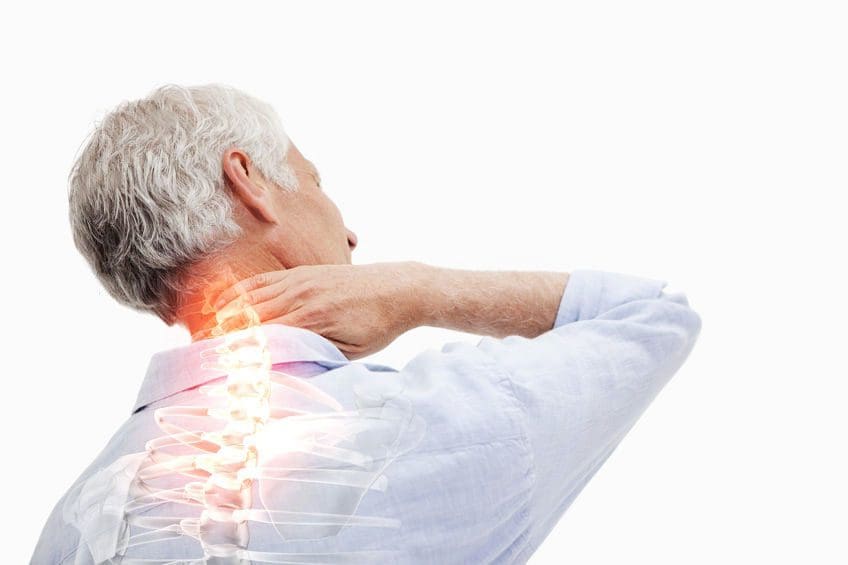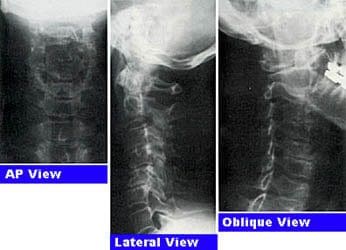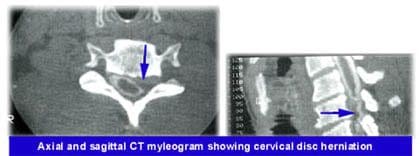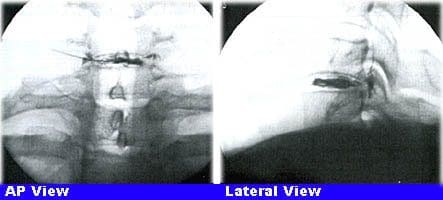Aging affects the entire body, which includes the spine, neck and shoulders, upper back, and arms.
It does not mean that everyone will develop neck pain, but the wear and tear put the spine can lead to degenerative spinal conditions.
Doctor of Chiropractic Dr. Alexander Jimenez discusses:
- Cervical spine anatomy
- Degenerative spinal disorders that cause
- Neck pain
- Diagnosis
- Treatment of neck pain and symptoms
Anatomy
The cervical spine by the top 7 vertebrae of the spine.Often referred to as C1-C7, with the "C" indicating cervical, and the numbers 1-7 indicate the level.
- C1 is closest to the skull
- C7 is closest to the thoracic chest/rib cage area
- Highly mobile with a broad range of motion
- Supports the skull
- Neck anatomy is complex
Neck Pain Symptoms
Several symptoms can occur and indicate the presence of a degenerative condition:- Neck pain
- Pain around the back of the shoulder area
- Arm pain, numbness, or weakness
- Difficulty with hand dexterity or walking
Conditions That Affect the Neck
The degenerative process begins in any of the joints in the spine, but over time it can cause changes in the other joints.An example is an intervertebral disc where:
The disc narrows and the normal movement becomes altered, and the adjacent joints are subjected to force and pressure, which can lead to degenerative arthritis joint inflammation.
Spondylosis or spinal osteoarthritis causing pain in the neck is common. The pain can radiate, or spread, into the shoulder/s or down the arm/s. Arm pain or weakness caused by a bone spur compressing a spinal nerve root can also occur.
Diagnosing Cervical Spine Conditions
Once examined one or more symptoms are likely to be present.The doctor will ask the patient questions to learn the history of the patient.
A thorough evaluation of the patient will be conducted, including tests to identify the cause of pain and symptoms.
- A neurologic examination is performed to rule out neurological disorders
- Shoulder examination will also be done to ensure that the symptoms originate from the neck
- Diagnostic tests
X-rays for:
- Narrow intervertebral disc space
- Anterior osteophytes or bone spurs
- Spondylosis (ie, arthritis) of the facet joints
- Osteophytes created from the uncovertebral joints
CT Scans or computed tomography can show bone changes associated with degenerative spondylosis. Osteophytes can be observed and evaluated.
CT does not provide an optimal evaluation but can sometimes show disc herniations.
MRI magnetic resonance imaging is a powerful tool for cervical spondylosis.
MRI can help doctors identify:
- Disc herniation
- Osteophytes
- Joint arthrosis a type of osteoarthritis
It is very useful in delineating bone spurs from safe disc herniations.
Discography is used diagnostically when viewing the lumbar/low back and thoracic/mid-back spine, but using it in cervical spine imagery is debated among doctors.
Treatment Options
After the tests have been performed, a custom treatment plan is created.Nonsurgical Neck Pain Treatment
Nonsurgical treatment of cervical degenerative disease has been proven to provide excellent results in over 85% of patients.A multi-disciplinary approach:
Immobilization of the neck to reduce motion can be beneficial during acute episodes of pain.
Physical therapy (PT) and Chiropractic can be useful to decrease muscle spasms and return motion.
Both PT and chiropractic can use:
- Heat
- Electrical stimulation
- Exercise
Medications like:
- Analgesics
- Nonsteroidal anti-inflammatories
- Muscle relaxants
- Opioids when absolutely necessary
Surgery
A surgeon is likely to consider surgery for a disorder if one or more of the following criteria are met:- Nonsurgical care has been tried and has not worked
- Spinal cord dysfunction
- Arm pain or weakness (neurological symptoms) that do not go away
- One type of surgery is the removal of the bone spur(s)
- Cervical spinal fusion that joins two or more vertebrae
The surgeon will explain the recommended procedure to you clearly.
Most of the time the preferred approach is anterior or from the front interbody fusion.
A cervical plate could be placed over the interbody device or graft to stabilize the neck. This can avoid the need for a brace after.
A posterior approach from the back of the spine is considered when a disc has herniated laterally or to the side.
Things You Can Do
Cervical spine disorders can be diagnosed and treated more accurately with today's advancing technology.With the guidance and treatment of an expert medical team, patients can expect to see a definite improvement in their condition and symptoms.
El Paso, TX Chiropractic Neck Pain Treatment
Sandra Rubio discusses the symptoms, causes, and treatments of neck pain. Headaches, migraines, dizziness, confusion, and weakness in the upper extremities are some of the most common symptoms associated with neck pain. Trauma from an injury, such as that from an automobile accident or a sports injury, or an aggravated condition due to improper posture can commonly cause neck pain and other symptoms. Dr. Alex Jimenez utilizes spinal adjustments and manual manipulations, among other chiropractic treatment methods like deep-tissue massage, to restore the alignment of the cervical spine and improve neck pain. Chiropractic care with Dr. Jimenez is the non-surgical choice for restoring a patient's overall well-being.
Neck pain is a common health issue, with approximately two-thirds of the population being affected by neck pain at any time throughout their lives. Neck pain originating in the cervical spine, or upper spine can be caused by numerous other spinal health issues. Neck pain can result due to the pinching of the nerves emanating from the vertebrae, or because of muscular tightness in both the upper spine and the neck. Joint disruption in the neck can generate a variety of other common symptoms, including headache, or head pain, and migraines, as does joint disturbance in the back. Neck pain affects about 5 percent of the global population as of 2010, according to statistics.









